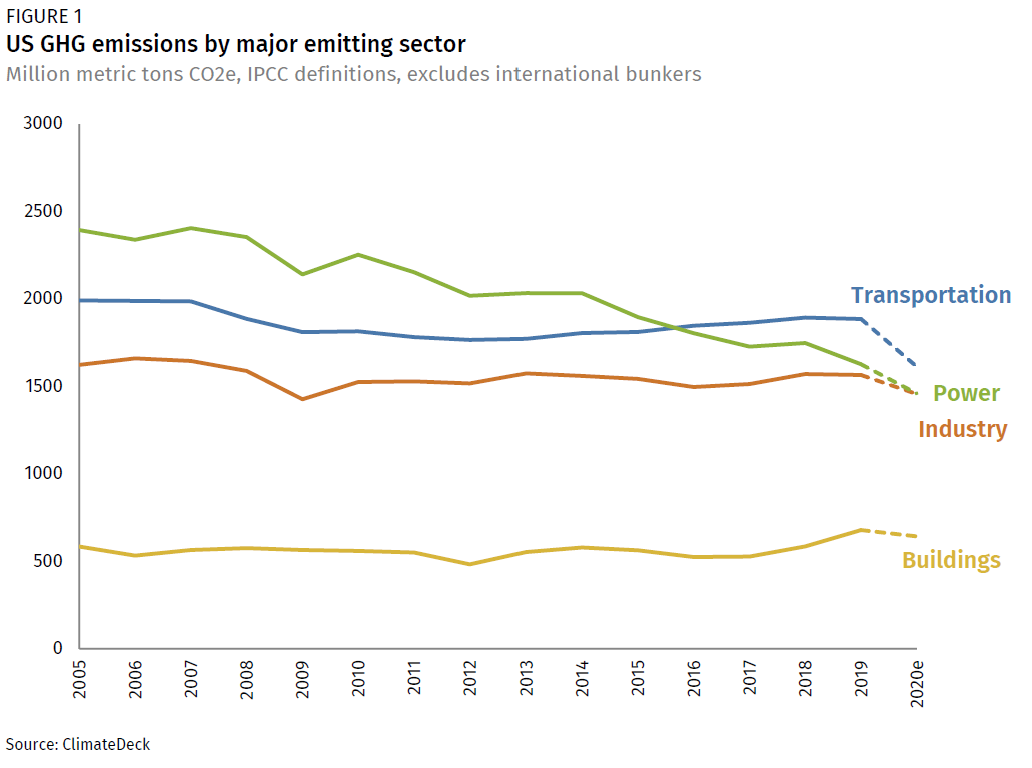Author: Wesley Wiggins ’21
2020 is a year that many of us will remember as one of the most monumental and frustrating years of our lives. The biggest reason for this is the coronavirus pandemic that kept us trapped in our homes for the majority of the year. However, there were several important climate-related events that happened last year as well that can help to inform how we move forward into the future.

The most surprising change was the 10% decline in annual greenhouse gas emissions which is one of the biggest drops in the emissions since the recession in 2009. The primary reasons for this drop are the pandemic and the economic decline associated with it. Also, the decrease in both air travel and vehicle travel when the pandemic started has the biggest individual contributor to the decline as well. The 10% decline in emissions is significant, but also may only be temporary as life returns to “normal” after the vaccine is distributed. This decline, however temporary, still proves to us that if such a huge, unplanned, societal shift can impact emissions so dramatically, then a massive, planned shift towards sustainability could also allow us to dramatically reduce emissions. The same emission changes in the major sectors like transportation, energy, and industry we saw in 2020 are the same changes we want to start seeing in order to deter the worst effects of climate change.

Along with the pandemic-caused decline in emissions, this year also showed us what could be the beginning of a long-trend of climate-induced catastrophes. Even before the pandemic, Australia experienced record-breaking wildfires which led to many fatalities and displaced many human and animal communities. Later in the year, we saw more unprecedented wildfires on the West Coast of the United States which burned over 3 million acres of land. The 2020 hurricane season was also deemed to be “extremely active”, so much so that the normal alphabet of Hurricane names was exhausted and Greek Letters had to be used to identify new hurricanes and tropical storms. These natural disasters may not have been directly caused by climate change, but they could have been intensified by the warming oceans, increasing global temperatures, and changes in regional precipitation patterns.
2020 has been a strange year for the climate. With the increasing harmful impacts of climate change and unexpected reductions in emissions, the fight against the climate crisis has suffered losses but gained some unexpected wins. But the question remains, what can we take away from climate news last year? Looking forward, in 2021, we can probably expect that there will be more climate-related disasters and emissions will rise again once we move past this pandemic. However, it is clear that we can bring down our emissions with the right changes. It feels weird to call this year’s emissions drop as hopeful considering what it cost, however, it strangely fills me with the hope that our emissions can go down. It’s one thing to see these changes in a climate model and another to see these changes in the real world.
Even though we cannot congratulate ourselves on the 2020 emissions reductions, we can do our best to replicate or even continue the emissions trends that started last year. Part of that change has to come from governing bodies, but it can also start at the personal level. Drive less, use less electricity, use less water, eat less meat. Eat more plant-based meals, bike more, use natural light when you can, use reusables. As 2020 has shown us, lifestyle changes, no matter how sudden or unexpected, can lead to big changes in our emissions.
